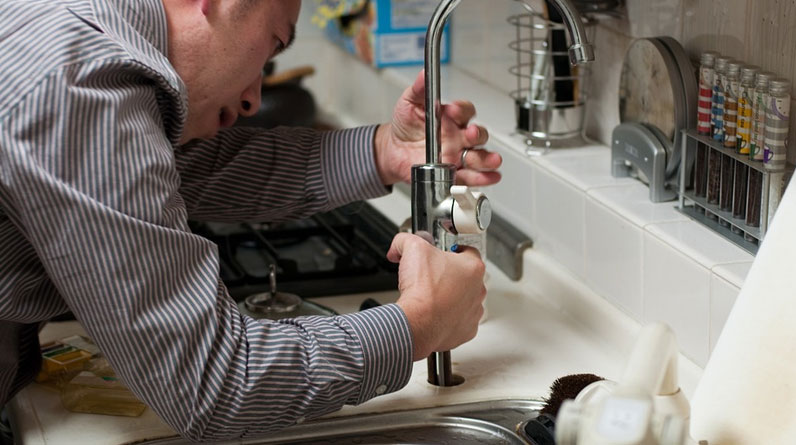
Common Plumbing Repairs
Plumbing is not the most exciting part of home ownership, but when something goes wrong, it can be one of the most frustrating.
Most homeowners won’t have the time or skills to tackle plumbing repairs on their own. In fact, we know that many new homeowners are afraid of tackling plumbing repairs because they think it’s too difficult for them to do. But don’t let that stop you from tackling the project!
There are plenty of easy DIY plumbing repairs you can do without having a professional come over every time your toilet won’t flush or sinks begin gushing water. Read on for some tips and tricks on how you can tackle these common DIY plumbing repairs at home.
Fixing a Leaky Faucet
A leaky faucet can be an annoying and costly problem. Luckily, there are a few DIY fixes you can try before deciding on a new faucet altogether. First, make sure the faucet is securely attached to the sink. If it’s not properly attached, it can wiggle around and cause the washer to wear out faster.
If you have a dripping faucet, you can repair it with a few simple tools. Most likely, the faucet has a washer that’s worn out.
You can replace this washer yourself and save some money, or you can hire a plumber to do it for you. If you choose to do it yourself, be sure to turn off the water supply to the faucet.
There will be a valve near the faucet where the water supply line is connected. If you can’t find the valve, you can shut off the water supply at the main water valve, which is usually located in the garage or basement
Once the water supply is off, remove the faucet handle by loosening the stem with an Allen wrench.
Also, check to see if there are any cracks in the faucet. This is more common than you may think. If you find any cracks, it’s best to replace the faucet rather than try to repair it.
Another common cause of faucet leaks is the O-ring. This rubber ring is located inside the faucet’s base, between the faucet and the sink. If this ring is worn out or damaged, it can cause a leak. To fix this, remove the faucet and replace the O-ring.
And one last thing you can try is adjusting the faucet stem. This can often be adjusted using just an Allen wrench. Simply turn the stem clockwise to tighten it and turn it counterclockwise to loosen it.
Replacing Shower Heads
If you’re not satisfied with your shower head, you can always replace it with a new one. Naturally, you will first have to take your old shower head down before you can install the new one.
You can buy new shower heads at most hardware stores and home improvement stores, and they’re fairly inexpensive. Most showerheads have a threaded pipe you would just screw onto the pipe protruding from the wall. All it takes is a good hand-tightening in most cases, but a wrench may be used if needed.
If you don’t necessarily want to replace your shower head, you can clean it to restore its proper function. You can use a stiff wire brush and some vinegar to clean the inside of the shower head. The vinegar and wire brush should loosen up any calcium or mineral deposits that are clogging up your shower head, and once they’re cleaned out, your shower should work like new again.
If it’s very dirty and caked up, you can soak the whole head in a water/vinegar solution for a few hours to loosen up any calcium and soap.
If you do want to replace the shower head, be sure to buy the right size shower head so that the flow is maintained correctly.
Stopping A Toilet From Running
If your toilet keeps running, the culprit will most likely be a worn-out flapper. This is a rubber or plastic piece that lets water into the tank when it’s flushed.
Once it wears out, the water will continue to flow into the toilet bowl and sound like a running faucet. You can replace the flapper yourself.
First, turn off the water to the toilet. Then remove the lid on the toilet tank and locate the flapper. It will be a large rubber piece that looks like a car flapper that’s been cut in half. Remove the old flapper and clean the area around it, especially where it makes contact. Replace it with a new flapper and you should be all set.
Finally, turn the water back on and test out the toilet. If the toilet keeps running, your problem may be a larger issue and may require the help of a plumber.
Conclusion
Plumbing repairs can be scary and intimidating, but they don’t have to be! There are so many easy DIY repairs you can do to save money and get your plumbing system running smoothly again. If you have a plumbing issue in your home, don’t feel like the only solution is to call a plumber.
There’s a good chance you can tackle the DIY plumbing repairs yourself. Just remember to turn off the water supply before you start any repairs and make sure to use the right tools for the job.
